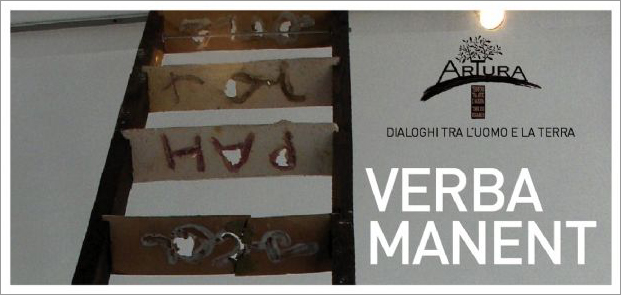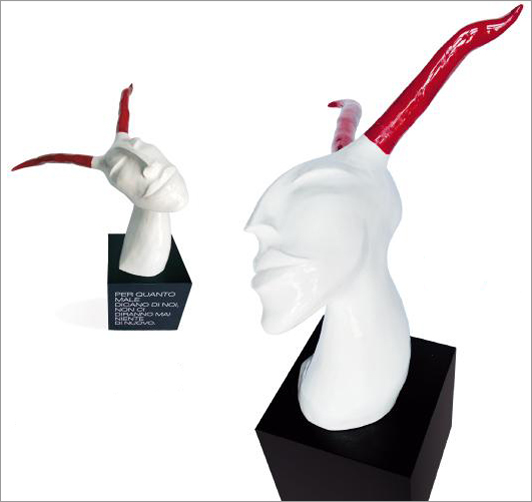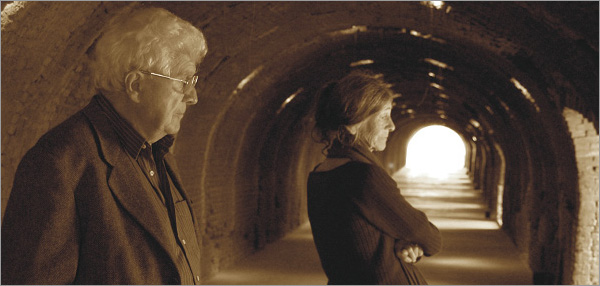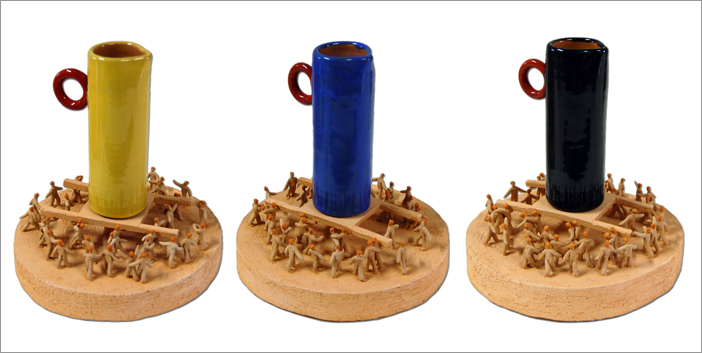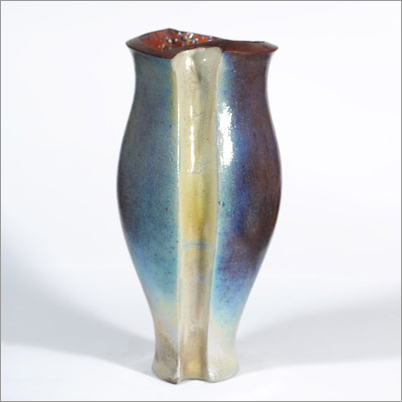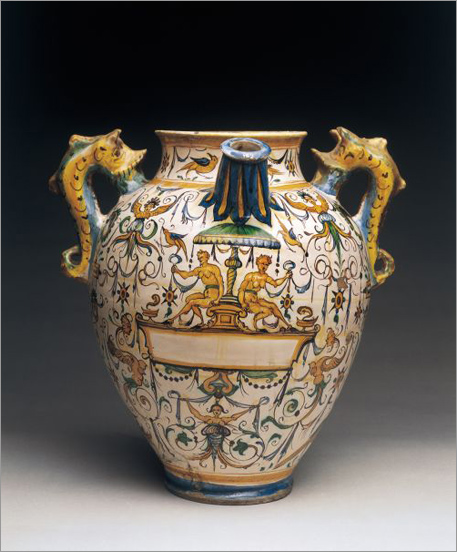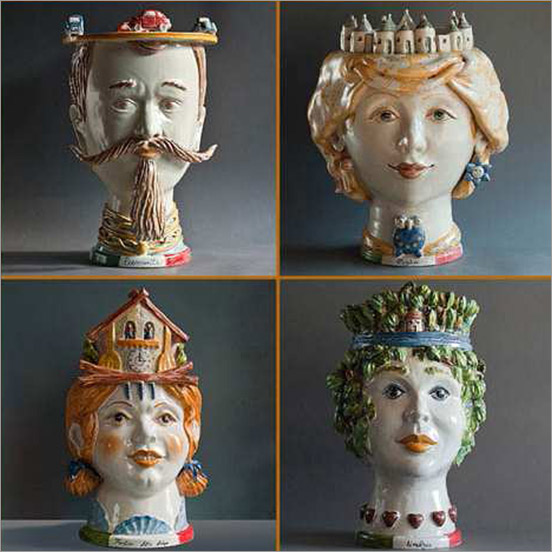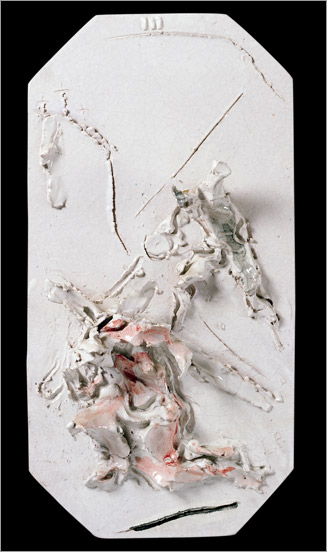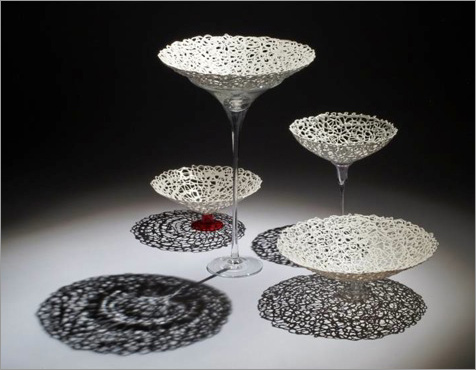 Our relationship with Antonella Cimatti was based on coincidences. Last year Manuela and I noticed one of her paperclay works, a crespina on a tall glass stem, on a design magazine and took a mental note of the name of the artist.
Our relationship with Antonella Cimatti was based on coincidences. Last year Manuela and I noticed one of her paperclay works, a crespina on a tall glass stem, on a design magazine and took a mental note of the name of the artist.
On a one day trip to Faenza during the Summer I tried to contact Antonella but she was out of town… Almost accidentally, however, I visited a temporary exhibition at the Mic where I was fascinated by her ceramic and light installation.
In November we went to visit a ceramic art exhibition at the Ab Ovo Gallery in Todi and we saw (and touched, with the permission of the Gallery owner…) two of her crespine.
A couple of weeks later Antonella sent us an email to establish a contact with us. The circle was closed!
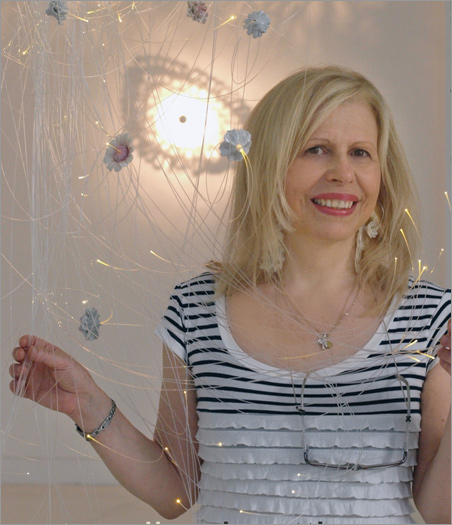 Antonella Cimatti’s artistic path is extremely rich. Born in Faenza, where she still lives, she studied with Carlo Zauli, one of the most important artists of the 20th century. Since her graduation in Fine Arts in Bologna, she has been constantly experimenting new techniques and mediums, with a keen interest in design.
Antonella Cimatti’s artistic path is extremely rich. Born in Faenza, where she still lives, she studied with Carlo Zauli, one of the most important artists of the 20th century. Since her graduation in Fine Arts in Bologna, she has been constantly experimenting new techniques and mediums, with a keen interest in design.
We interviewed her a few days ago.
TIPJ: Antonella, reading your CV, Manuela and I were very much impressed by the large number of activities, studies and experiences you’ve been through. A short summary for our readers:
– internships abroad to study different techniques relating to pottery making, decoration and design;
– design projects with leading glass and ceramic companies
– participation to experimental art movements
– ceramic exhibitions, camps and contexts all over the world
Last, but not least, you have been teaching at the State Art Institute of Ceramics Ballardini since 1979. It really looks like you are “hungry” to learn and experiment. What is the drive behind your multiple activities?
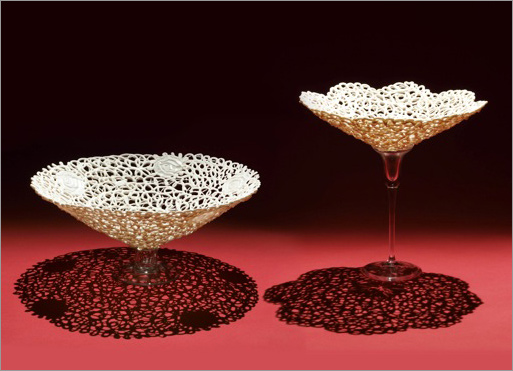 A. Cimatti: I believe that a major commitment for an artist is to always keep up to date professionally. Indeed spontaneous creativity must without exception be complemented by high standards of professional competence in technique, technology and in the interpretation of contemporary art: first reading and observing, then the pleasure of testing, combining and confirming.
A. Cimatti: I believe that a major commitment for an artist is to always keep up to date professionally. Indeed spontaneous creativity must without exception be complemented by high standards of professional competence in technique, technology and in the interpretation of contemporary art: first reading and observing, then the pleasure of testing, combining and confirming.
That’s why I’ve always been fascinated by experiments. It all started when I was a student, around ’75 and I tested the fusion of Murano glass mosaics on ceramic sheets and plates.
This is a technique that I later applied on larger ceramic panels, published by Nino Caruso in his book “Ceramic decoration”, and also on majolica during the 80’s. I made small diptychs and politychs and I decorated them with pearls and glass filaments for the exhibitions of the art group “The new ceramic” (La Nuova Ceramica), curated by Franco Solmi and Marilena Pasquali.
Continue reading →
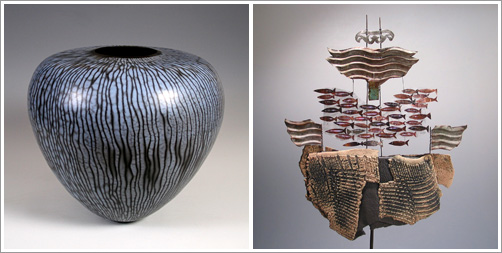 I know, I know… it’s not Italian pottery … Still it’s most beautiful pottery and we feel it’s just right to promote the hard work of the Ab Ovo Gallery in bringing to us the works of Roland Summer and Christina Wiese, two well established Austrian artists with a wide International reputation.
I know, I know… it’s not Italian pottery … Still it’s most beautiful pottery and we feel it’s just right to promote the hard work of the Ab Ovo Gallery in bringing to us the works of Roland Summer and Christina Wiese, two well established Austrian artists with a wide International reputation.
